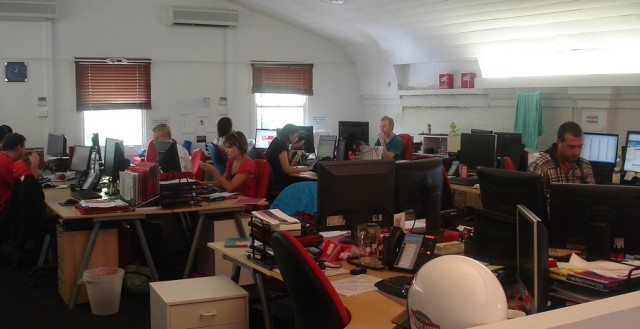These new floor plans are ideal for maximizing a company’s space while minimizing costs. Bosses love the ability to keep a closer eye on their employees, ensuring clandestine porn-watching, constant social media-browsing and unlimited personal cellphone use isn’t occupying billing hours. But employers are getting a false sense of improved productivity. A 2013 study found that many workers in open offices are frustrated by distractions that lead to poorer work performance. Nearly half of the surveyed workers in open offices said the lack of sound privacy was a significant problem for them and more than 30 percent complained about the lack of visual privacy. Meanwhile, “ease of interaction” with colleagues — the problem that open offices profess to fix — was cited as a problem by fewer than 10 percent of workers in any type of office setting. In fact, those with private offices were least likely to identify their ability to communicate with colleagues as an issue. In a previous study, researchers concluded that “the loss of productivity due to noise distraction … was doubled in open-plan offices compared to private offices.”
The New Yorker, in a review of research on open office, has determined that the benefits in building camaraderie simply mask the negative effects on work performance. While employees feel like they’re part of a laid-back, innovative enterprise, the environment ultimately damages workers’ attention spans, productivity, creative thinking, and satisfaction. Furthermore, a sense of privacy boosts job performance, while the opposite can cause feelings of helplessness. In addition to the distractions, my colleagues and I have been more vulnerable to illness. Last flu season took down a succession of my co-workers like dominoes.

